I recently spent three months in London. I was mostly on my own, living in a brightly coloured attic near Highgate and spending the weekdays at the British Library. Highgate is famous for a cemetery that has Karl Marx’s grave. Built in mid-19th century, the Highgate Cemetery has two adjacent blocks: East Cemetery and West Cemetery. On a rainy and cold January afternoon I walked to the eastern block. Among thousands of graves, it was easy to locate Marx (a bust of Marx makes it easier). His grave had a few candles and some flower bouquets. I saw a couple of visitors standing in front of his bust, raising their fists and paying tribute. A week after my visit, a group of fanatics would attack Marx’s grave to permanently damage it.
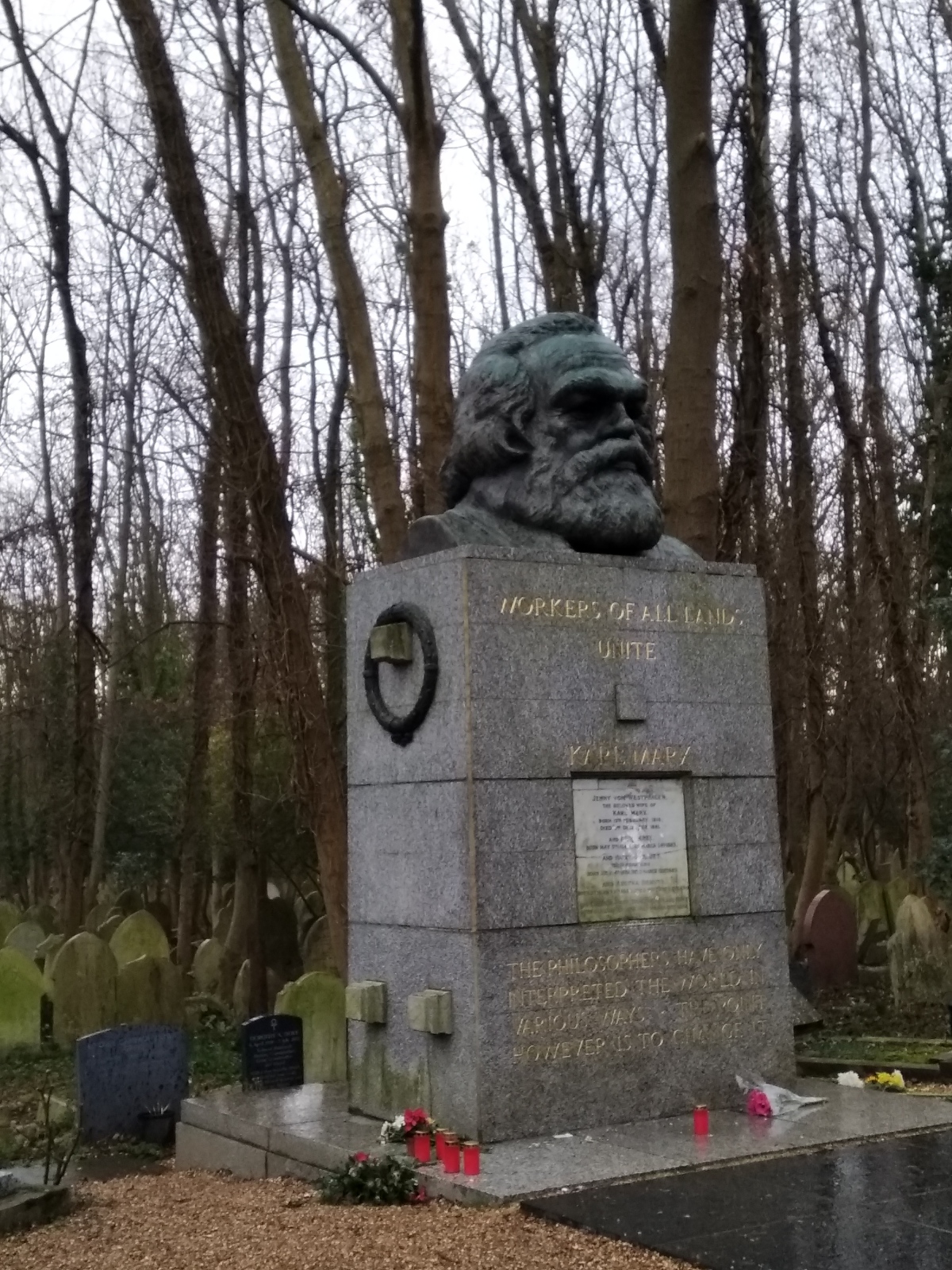
Marx’s grave and his statue at the Highgate Cemetery
Opposite to Marx, rests Herbert Spencer (sociologist, philosopher, political theorist). British Marxist historian Eric Hobsbawm’s tomb is a few steps away from Marx and Spencer. I could locate Yusuf Dadoo and George Eliot too. A map from the ticket counter helped. But despite some attempts, I could not find Douglas Adams. He is there though, hidden somewhere amidst the trees, unkempt grasses, wildflowers and innumerable beautiful statues of angels.
Highgate Cemetery, not surprisingly, has a few ghost stories to offer. The ghost(s) of Highgate became a sensation in the late 1960s and early ’70s when newspapers quoted several locals claiming to have seen a variety of supernatural figures in and around the cemetery (like a tall man in a hat, a cyclist, a lady wearing white dress, someone playing with water in the nearby pond etc.). Some claimed it to be a vampire. When a headless body of a woman was discovered near the cemetery, London’s “ghost hunters”, “magicians” and brave-hearts began to visit it in large numbers and at odd hours. All these hullabaloos died with time and with occasional police interventions. But the stories have survived adding an eerie charm to this beautiful cemetery.
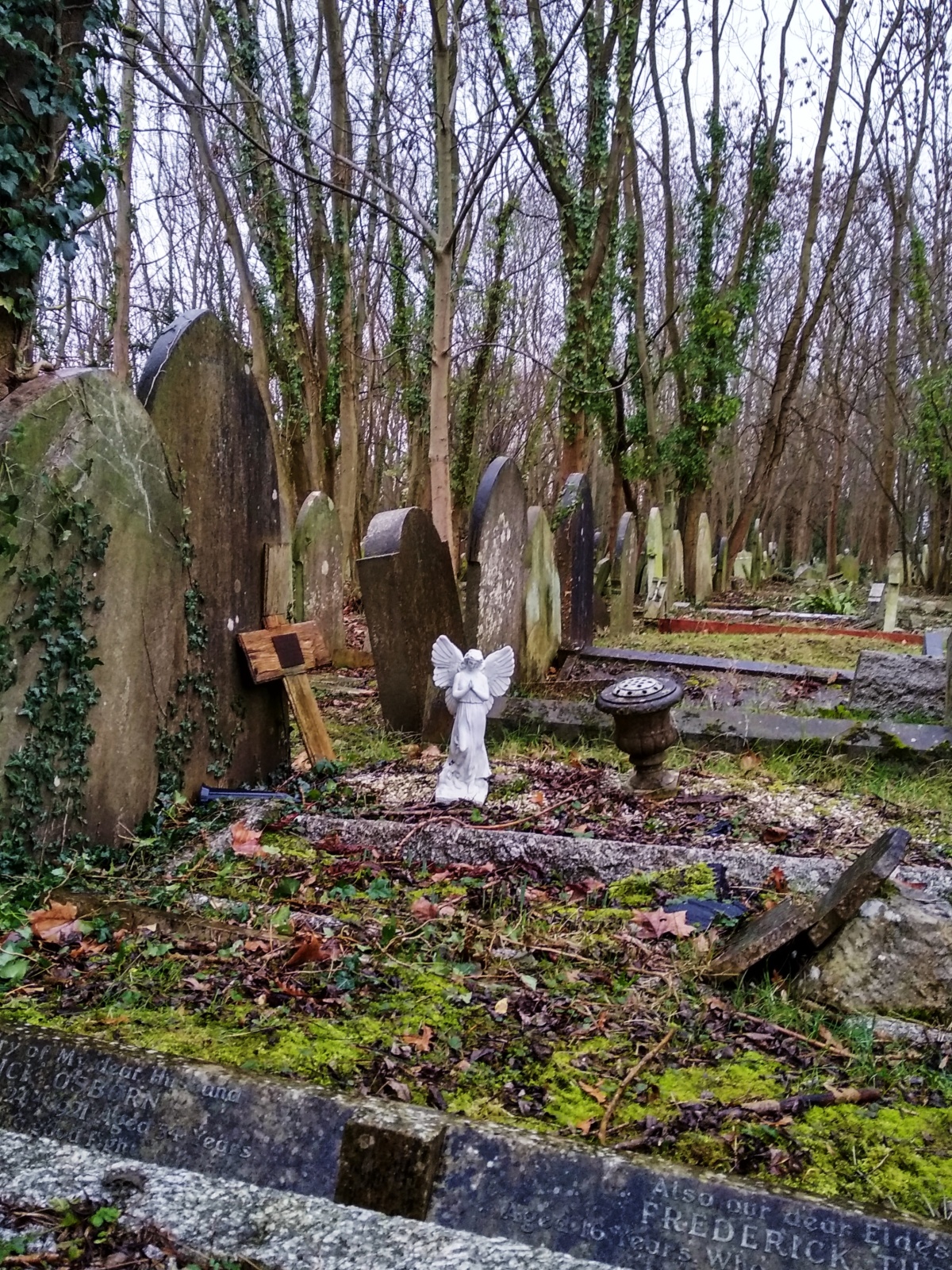
One of the angels at the Highgate Cemetery
The cemetery is one of the many attractions of Highgate. I used to aimlessly walk around the Highgate Village. Beautiful houses, some of which date back to 18th century, old pubs, string of shops around the Highgate “high street”, parks and ponds give Highgate a distinct character. From Samuel Coleridge to A.E. Housman to Charles Dickens, Highgate had many famous residents (today Kate Moss and Jude Law, among others, own properties here). They lived and worked from here and went for a drink or two at the local pubs. The Gatehouse, one of the oldest pubs of Highgate (the earliest mention of this pub goes back to 1670), had Lord Byron and Charles Dickens as it’s customers. Byron also occasionally went to the Flask, another old pub in Highgate, to unwind. Like the cemetery, these old pubs have their own spooky stories to offer. In one of the rooms of the Flask, a Spanish barmaid hanged herself; in another room the first autopsy of England took place secretly, with a body taken out from the cemetery. The beautiful sitting area, old architectures and an affordable menu make Flask a popular place even today. But if you are around Highgate on a Sunday, do take out some time for a Sunday roast at the Red Lion and the Sun, another nineteenth century pub.
Highgate has a significant connection with Indian history as well. The India House, which was a resident for Indian students in early 20th century, is in Highgate. This emerged as the hub of right wing students’ activism under the patronage of Shyamji Krishna Verma. Verma used to deliver weekly lectures at the Highgate Cemetery, deliberately with his back towards Marx to establish his differences with latter’s political philosophy. Under Verma’s patronage, Savarkar, Lala Hardayal, Madan Lal Dhingra and many others had stayed in this house and propagated their brands of Indian nationalism.
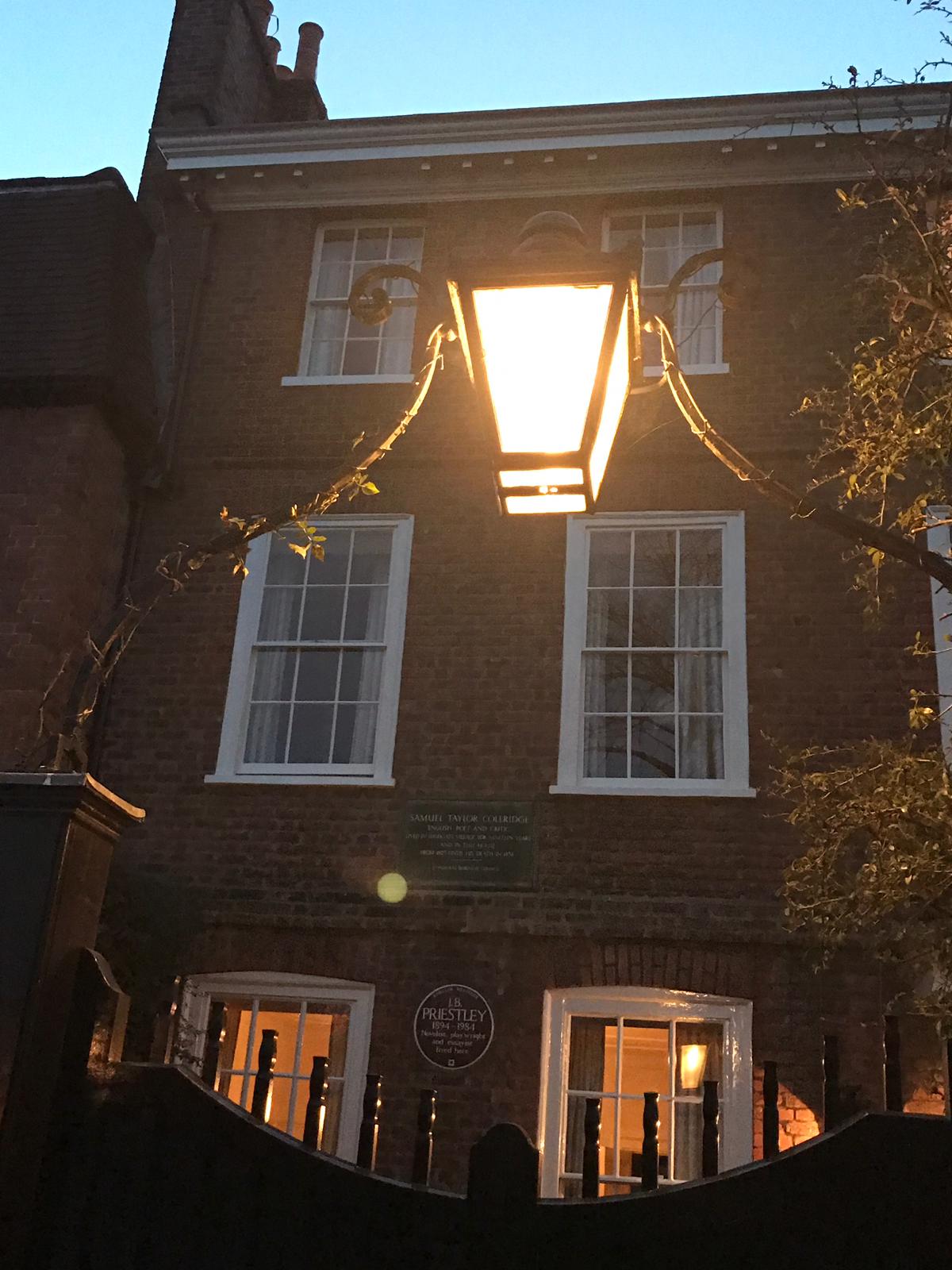
The house where Samuel Taylor Coleridge and I.B. Priestley had lived.
There are two lovely and somewhat popular walks from Highgate – one that takes you to the Parliament Hill and the other is known as the Parkland Walk. The Parliament Hill walk is through vast green fields and lakes. I went there with a friend on a sunny day, had ice cream and walked around. Children were flying kites and playing football. Some people were just sitting on the grass with their books and beer. The view point, from where you can see much of the London skyline, was crowded. But the walk to that point and coming back from there was rejuvenating.
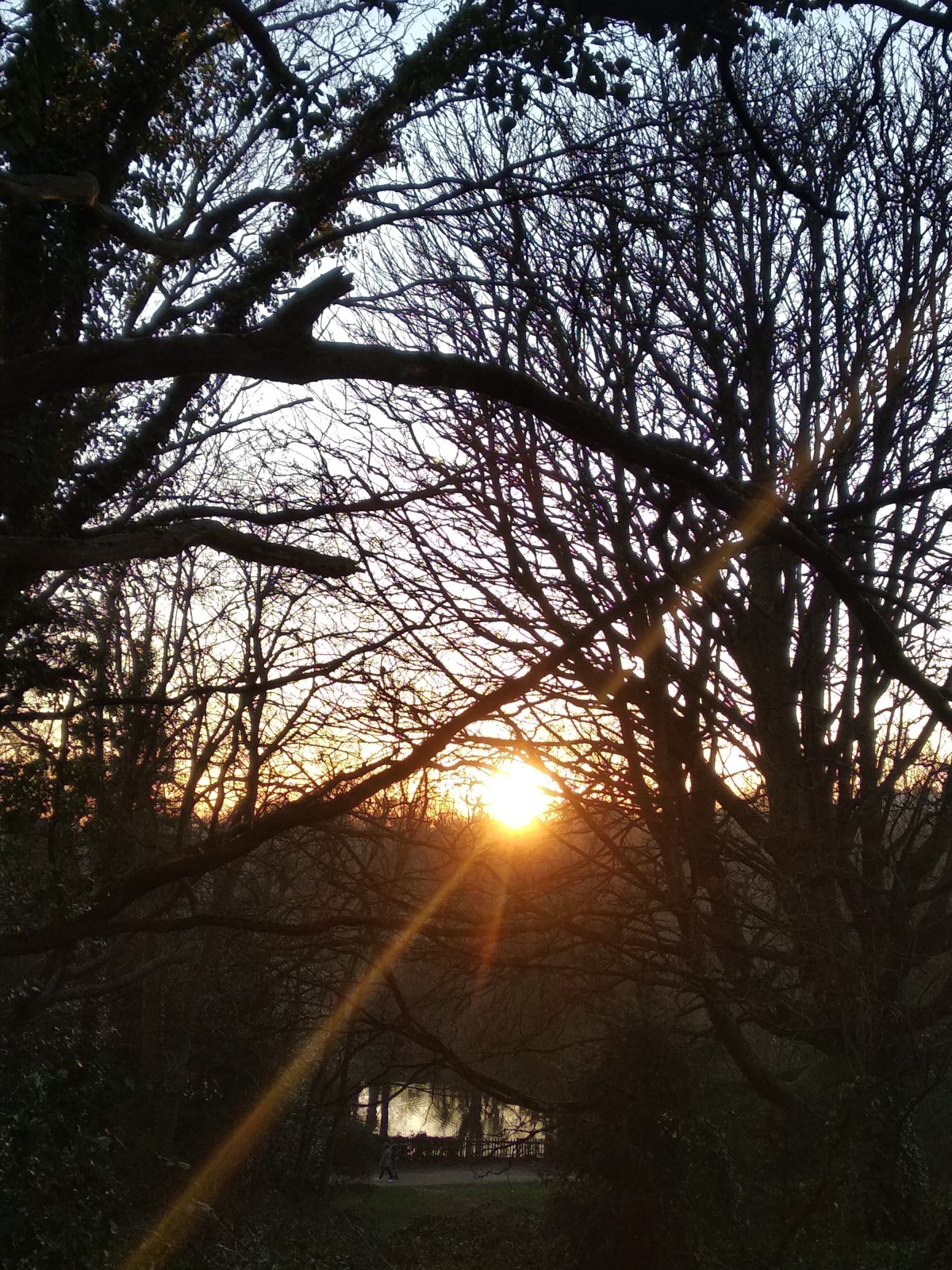
Chasing Sunset, somewhere in Parliament Hill.
The Parkland Walk was also equally nice. It is a nature reserve in the heart of the city. We walked from Highgate to Finsbury Park. I did this walk sometime in March. Cold though it was, signs of spring were everywhere. It was a lush green landscape dotted with flowers.
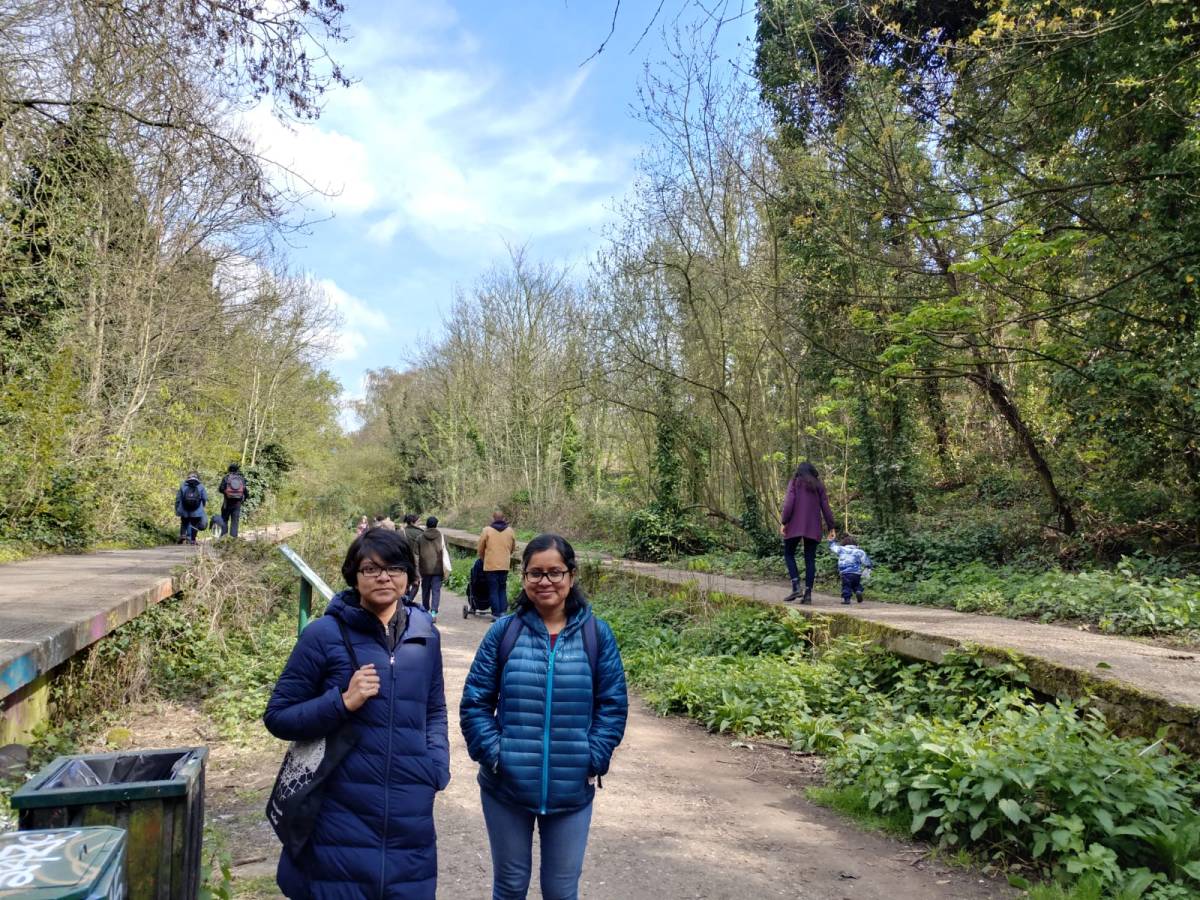
Parkland Walk on a busy and sunny Sunday
I saw Highgate during winter and spring. It was white with snow when I reached and was blooming with flowers when I left. I saw Highgate from the edge. I lived near the Highgate tube station on a road that had little in common with the posh Highgate village that I have been talking about until now. My landlady was an Indian Tamil by birth. My nearest grocery store was run by a Gujarati. The neighborhood wine shop was owned by a handsome man from Lahore whose parents were originally from Mumbai. There was a Chinese family who had a takeaway joint on this street. It was a mini London – cosmopolitan, welcoming and mostly uneventful. I had my only brush with London’s underclass in Highgate though, right in front of my house, when a con-woman tried to trick me and a friend of mine to get our mobile phones. We outsmarted her and told everyone about the incident for weeks. But apart from that Highgate remained quiet, beautiful and slow.
London, however, was passing through uncertain times. Brexit was supposed to take place on 29 March and then on 12 April. Highgate remained apparently indifferent. I saw only one poster hanging from a fancy house demanding people’s vote on Brexit. London in itself remained busy, disciplined and nonchalant about Brexit. There was one huge rally on a March Sunday. But on other days, London meant business as usual. Brexit was everywhere on the newspapers, radio, social media. But people did not block roads, struck work or destroyed government properties to make their points. Coming from Kolkata, I found this mode of politics odd, uncomfortable and perhaps somewhat limited. Brexit made me miss Kolkata. As much as I loved London, I was happy to be back to my sweaty, chaotic city of processions, strikes and street corners.
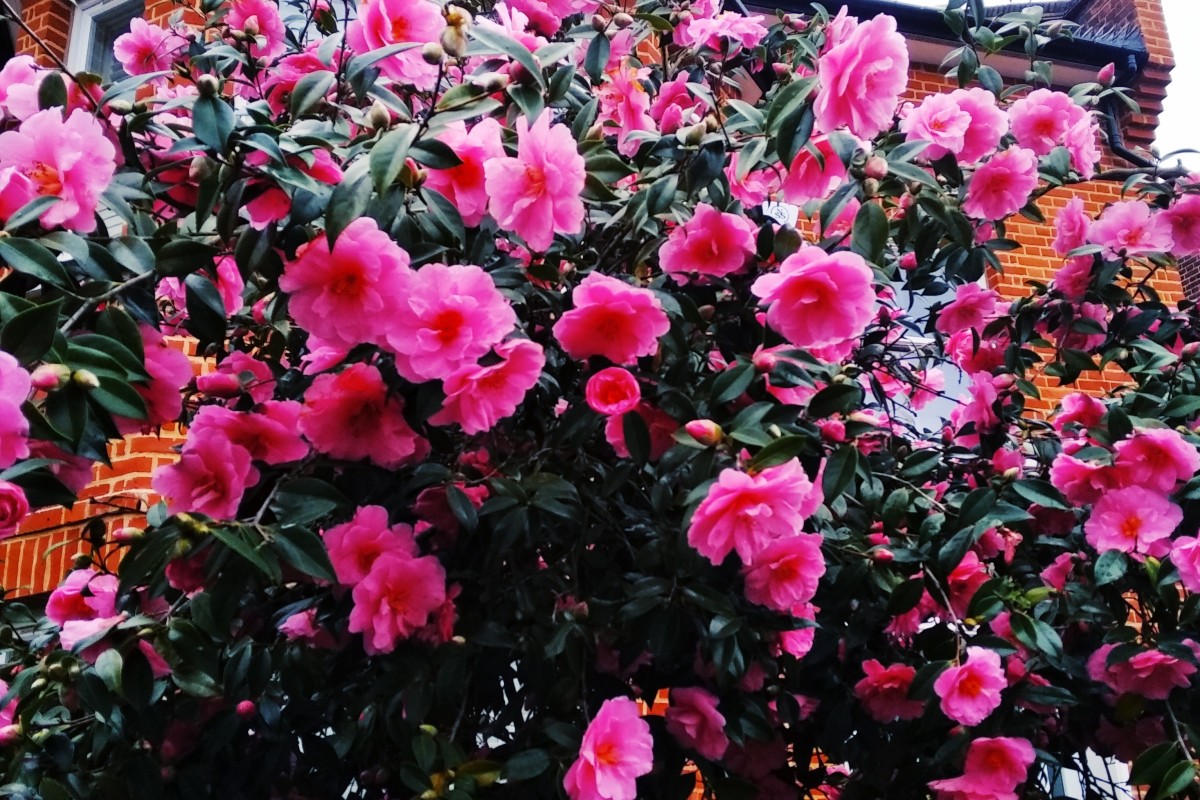
Loved it..
LikeLiked by 1 person
Missed blocked roads, strikes, destruction of government property, the Kolkata heat? That’s kind of weird. Otherwise an excellent description of a little known corner of London. Wanted to see more photos of the old pubs though, and the high street.
LikeLiked by 1 person